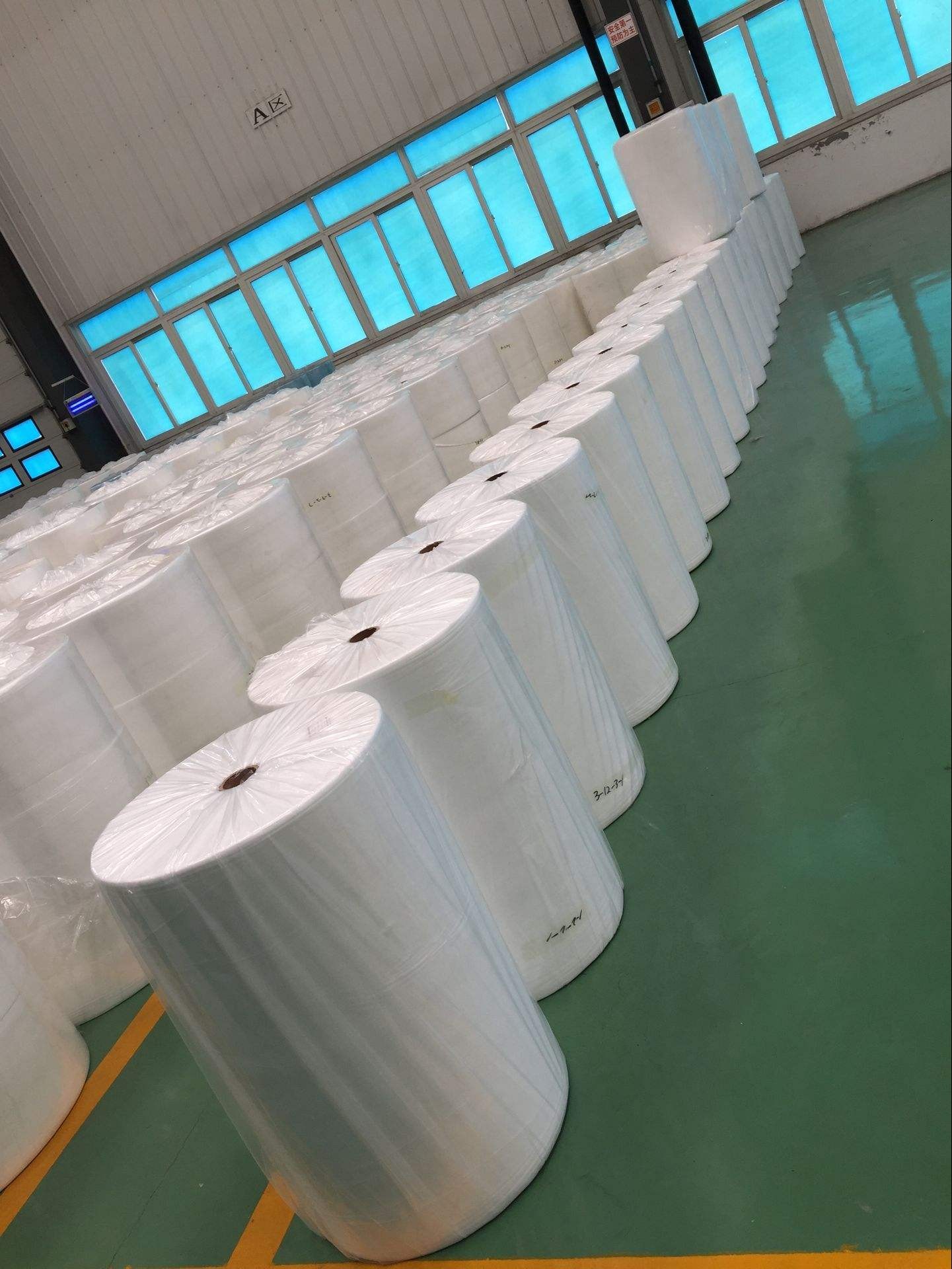The development of meltblown fabric began in the early 1950s, but it was not until the late 1970s that Exxon company of the United States transformed this technology into a civil technology and greatly developed the melt blown spinning method. Since the 1950s, China has begun to develop the production technology of melt blown nonwovens, and has done a lot of work in process theory and product development. However, compared with the foreign level, China still has a certain distance in the research, design and manufacturing of production equipment. This paper briefly introduces the development of production equipment and raw materials of meltblown non woven.
The principle of melt blown spinning is the same as that of traditional spinning. The difference is that the number and width of spray nozzles of melt blowing equipment have been increased. At the same time, significant changes have taken place in the vertical and horizontal directions of the fiber web. The installation form of the nozzle has also developed from the earliest fixed installation to flexible installation, realizing the vertical and inclined installation of the melt blown die head and the output direction of the fiber mesh. This new die equipment can not only reduce the cost, save energy, but also significantly improve the product quality. At the same time, the automation and electromechanical integration level of meltblown fabric has been continuously improved, and its production process has developed from the early single component to the production of two-component and multi-component fibers. In recent years, the meltblown process has a huge market, and the meltblown equipment has developed from a single type to a variety of composite types.
Innovations in melt blown nonwovens abroad emerge in endlessly, mainly including:
(1) JMI company of the United States has replaced the conventional melting nozzle. Each parallel device has an internal valve and has the characteristics of rapid replacement of die head.
(2) German leffenhausel company has developed a new type of melt blown die head improvement device with high production efficiency and good product performance, which can be used to stretch and heat set the improved structure of coarse fiber melt blown fiber mesh.
(3) American 3M company has developed a kind of equipment that can produce high-temperature stable melt blown nonwovens. Its product feature is that the nonwovens are composed of multi-layer melt blown fibers.
(4) Jinbaili company has developed a new slit die melt blowing technology, which can reduce the blockage of the spinneret hole, and developed a new device for melt blowing. The device can make the draft air flow in a flow shape, and has the remarkable advantage of producing crimped and non crimped fibers under low energy consumption.

At present, the polymers that produce meltblown fabric include polyester, polyethylene, nylon, etc. The product has a skin core polymer, which can be concentric, eccentric and abnormal. Generally speaking, cheap materials are used as the core, and polymers with special properties are used as the skin layer. For example, the core is polypropylene, and the outer skin can be low melting point polyethylene or modified polypropylene that can play a bonding role; Trefoil or cross composite another polymer, for example, when it is used as moisture conducting and conductive fiber, the conductive composite can be compounded at its top. In this way, it not only has the functions of moisture conducting, conductive and antistatic, but also saves polymer consumption, reduces production costs and improves economic benefits; Mixed polymer, which is characterized by different materials, colors, fibers and cross-sectional shapes, and even juxtaposed with the skin core. The fiber is mixed with a fiber web containing not only blended but also two-component fibers, so that the fiber web can have the required properties.
Melt blown nonwovens have been processed with PLA fiber abroad; Eastman uses PCT and PBT polyester fibers to process melt blown nonwovens; Other new polymers include copolyesters, copolyamides, fusible elastomers and polyethylene. It can exist in the form of two-component fiber skin or homopolymer fiber in the product, so that the melt blown product has newer and better performance.

With the continuous development of society and the continuous enhancement of people's awareness of environmental protection, the applicable fields of nonwovens will continue to expand, meltblown fabric will also be applied to new industrial fields, and with the expansion of the market, the production equipment and raw materials of meltblown non woven will also continue to develop.
Comment(0)
You can comment after
SIGN IN